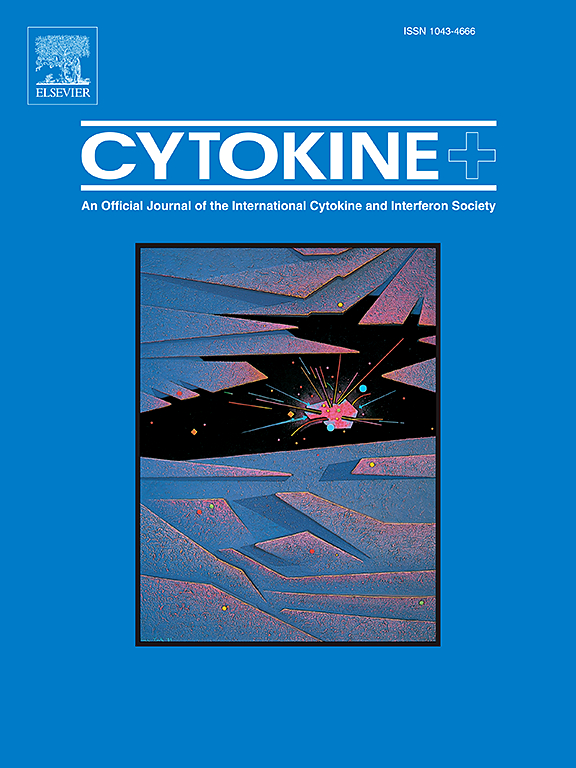Shared molecular biomarkers and therapeutic targets in rheumatoid arthritis and osteoarthritis: Focus on EIF3B, KHSRP, NCL, PDCD1LG2, and SLC25A37
IF 3.7
3区 医学
Q2 BIOCHEMISTRY & MOLECULAR BIOLOGY
引用次数: 0
Abstract
Rheumatoid arthritis (RA) and osteoarthritis (OA) are the most common joint diseases globally, posing major public health challenges. Although they are often distinguished from each other in clinical diagnoses, we hypothesize that RA and OA could have overlapping molecular pathways. Hence, this study was designed to explore the shared molecular changes and potential therapeutic targets for RA and OA. Transcriptome data were obtained from the Gene Expression Omnibus (GEO) database (GSE51588, GSE12021 and GSE55235), which included 117 synovial membrane samples (33 healthy, 50 OA, and 34 RA). Differentially expressed genes (DEGs) were identified using the “limma” package in R, and functional enrichment analyses were conducted using Gene ontology and Kyoto Encyclopedia of Genes and Genomes frameworks. Protein-protein interaction networks were constructed through STRING, and further analyzed using GeneMANIA. Immune cell infiltration in RA and OA samples was evaluated using the CIBERSORT algorithm; microRNA-messenger RNA interactions were predicted through miRanda, miRDB, miRWalk, and TargetScan databases; and lncRNAs targets were identified via the SpongeScan database. Gene-drug interactions were analyzed using DGIdb, and the results were validated in RA and OA mouse models via immunohistochemistry and western blot. In RA and OA, 38 DEGs were identified, including 23 downregulated and 15 upregulated genes (FDR < 0.05, |log2FC| > 0), associated with key pathways such as ubiquitin-mediated proteolysis, mTOR, JAK-STAT, and Wnt signaling. Hub genes, including EIF3B, KHSRP, nucleolin (NCL), PDCD1LG2, SLC25A37, demonstrated significant differential expression (p < 0.05). In addition, the receiver operating characteristic (ROC) curve analysis indicated good diagnostic potential, with areas under the curve (AUC) values ranging from 0.795 to 0.958. Furthermore, immune cell infiltration analysis revealed significant involvement of plasma cells, T cells, monocytes, and dendritic cells (p < 0.05). Several hub genes were targeted by existing drugs, such as NCL by AS1411, and PDCD1LG2 by Pembrolizumab. In vivo validation revealed that EIF3B, KHSRP, NCL, and PDCD1LG2 were downregulated in both RA and OA mouse models compared to controls (p < 0.01), with EIF3B exhibiting higher expression in RA than in OA (p < 0.01). Mitoferrin 1 expression showed no significant differences among groups. These findings suggest that RA and OA share common molecular pathways that may serve as promising diagnostic biomarkers and therapeutic targets.

类风湿关节炎和骨关节炎的共享分子生物标志物和治疗靶点:重点关注EIF3B、KHSRP、NCL、PDCD1LG2和SLC25A37
类风湿性关节炎(RA)和骨关节炎(OA)是全球最常见的关节疾病,构成了重大的公共卫生挑战。虽然它们在临床诊断中经常被区分开来,但我们假设RA和OA可能有重叠的分子通路。因此,本研究旨在探讨RA和OA的共同分子变化和潜在的治疗靶点。转录组数据来自Gene Expression Omnibus (GEO)数据库(GSE51588、GSE12021和GSE55235),包括117份滑膜样本(健康样本33份,OA样本50份,RA样本34份)。使用R中的“limma”包鉴定差异表达基因(deg),并使用基因本体和京都基因与基因组百科全书框架进行功能富集分析。通过STRING构建蛋白-蛋白相互作用网络,并使用GeneMANIA进一步分析。采用CIBERSORT算法评估RA和OA样品的免疫细胞浸润;通过miRanda、miRDB、miRWalk和TargetScan数据库预测microrna与信使RNA的相互作用;和lncrna靶点通过海绵扫描数据库进行鉴定。使用DGIdb分析基因-药物相互作用,并通过免疫组织化学和western blot在RA和OA小鼠模型中验证结果。在RA和OA中,共鉴定出38个基因,包括23个下调基因和15个上调基因(FDR <;0.05, |log2FC| >;0),与泛素介导的蛋白水解、mTOR、JAK-STAT和Wnt信号传导等关键途径相关。中心基因,包括EIF3B、KHSRP、核仁蛋白(NCL)、PDCD1LG2、SLC25A37,表现出显著的差异表达(p <;0.05)。此外,受试者工作特征(ROC)曲线分析显示良好的诊断潜力,曲线下面积(AUC)值在0.795 ~ 0.958之间。此外,免疫细胞浸润分析显示浆细胞、T细胞、单核细胞和树突状细胞(p <;0.05)。一些中枢基因被现有药物靶向,如AS1411靶向NCL, Pembrolizumab靶向PDCD1LG2。体内验证显示,与对照组相比,RA和OA小鼠模型中的EIF3B、KHSRP、NCL和PDCD1LG2均下调(p <;0.01), EIF3B在RA中的表达高于OA (p <;0.01)。Mitoferrin 1的表达在各组间无显著差异。这些发现表明RA和OA具有共同的分子通路,可能作为有希望的诊断生物标志物和治疗靶点。
本文章由计算机程序翻译,如有差异,请以英文原文为准。
求助全文
约1分钟内获得全文
求助全文
来源期刊

Cytokine
医学-免疫学
CiteScore
7.60
自引率
2.60%
发文量
262
审稿时长
48 days
期刊介绍:
The journal Cytokine has an open access mirror journal Cytokine: X, sharing the same aims and scope, editorial team, submission system and rigorous peer review.
* Devoted exclusively to the study of the molecular biology, genetics, biochemistry, immunology, genome-wide association studies, pathobiology, diagnostic and clinical applications of all known interleukins, hematopoietic factors, growth factors, cytotoxins, interferons, new cytokines, and chemokines, Cytokine provides comprehensive coverage of cytokines and their mechanisms of actions, 12 times a year by publishing original high quality refereed scientific papers from prominent investigators in both the academic and industrial sectors.
We will publish 3 major types of manuscripts:
1) Original manuscripts describing research results.
2) Basic and clinical reviews describing cytokine actions and regulation.
3) Short commentaries/perspectives on recently published aspects of cytokines, pathogenesis and clinical results.
 求助内容:
求助内容: 应助结果提醒方式:
应助结果提醒方式:


